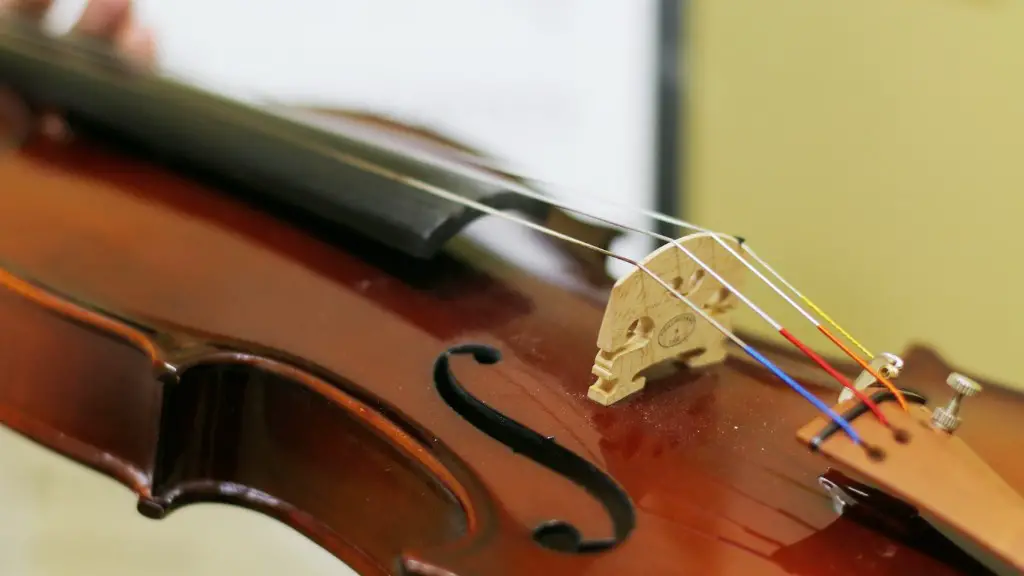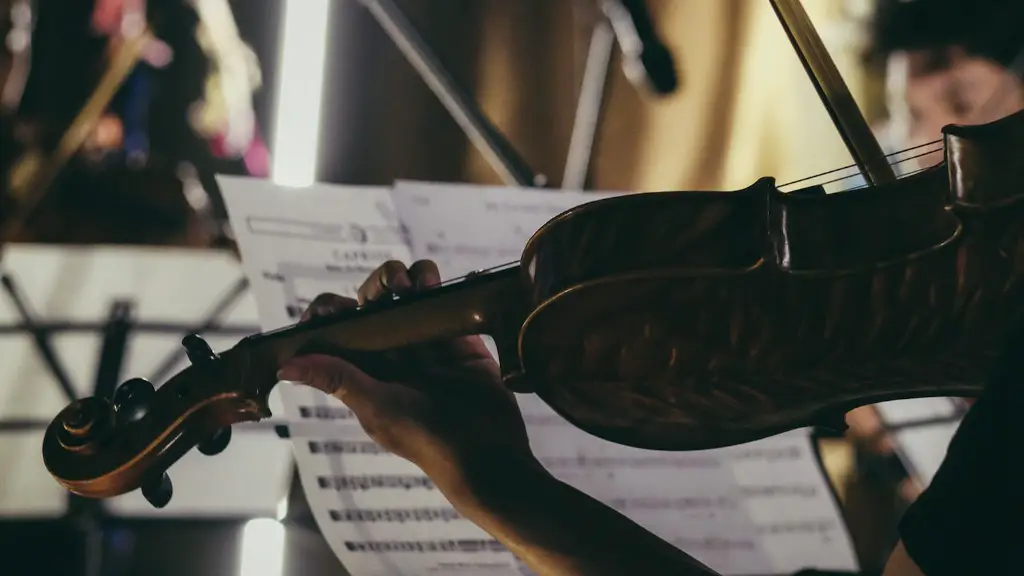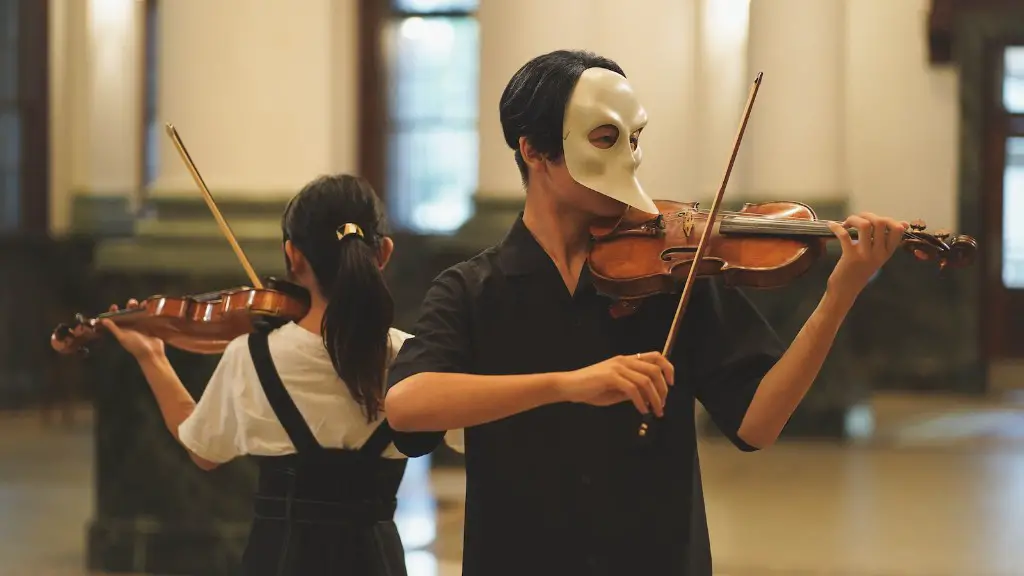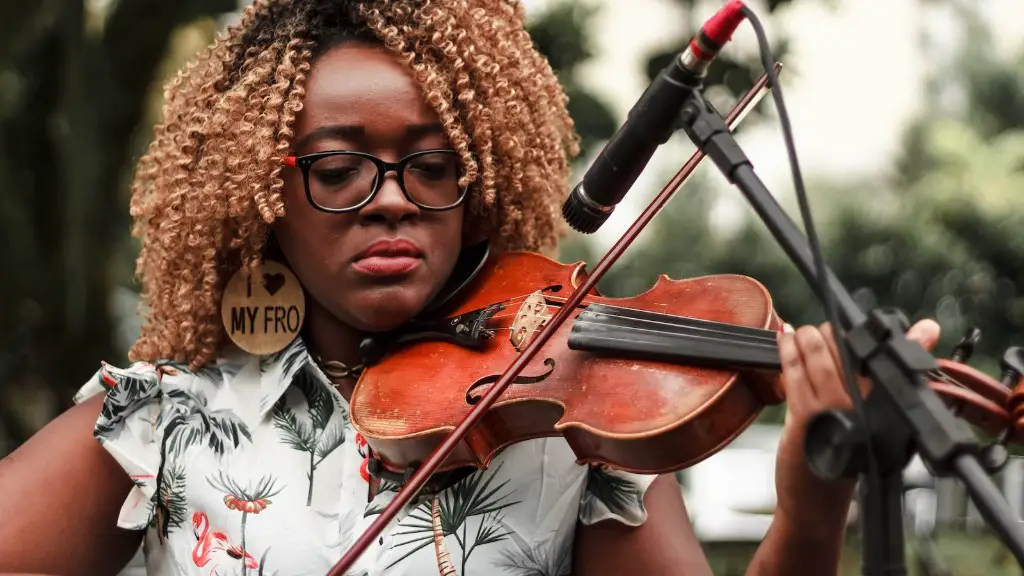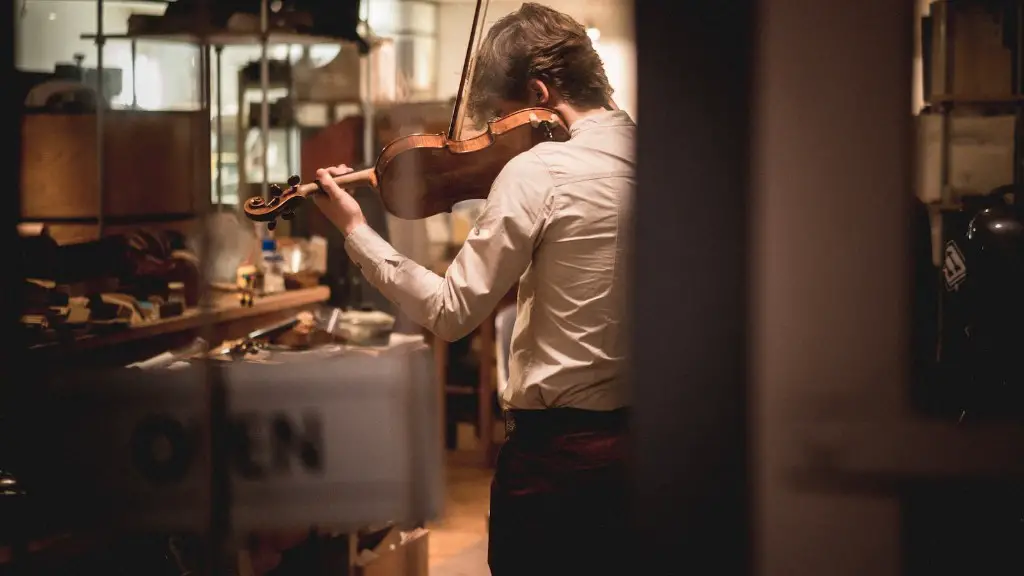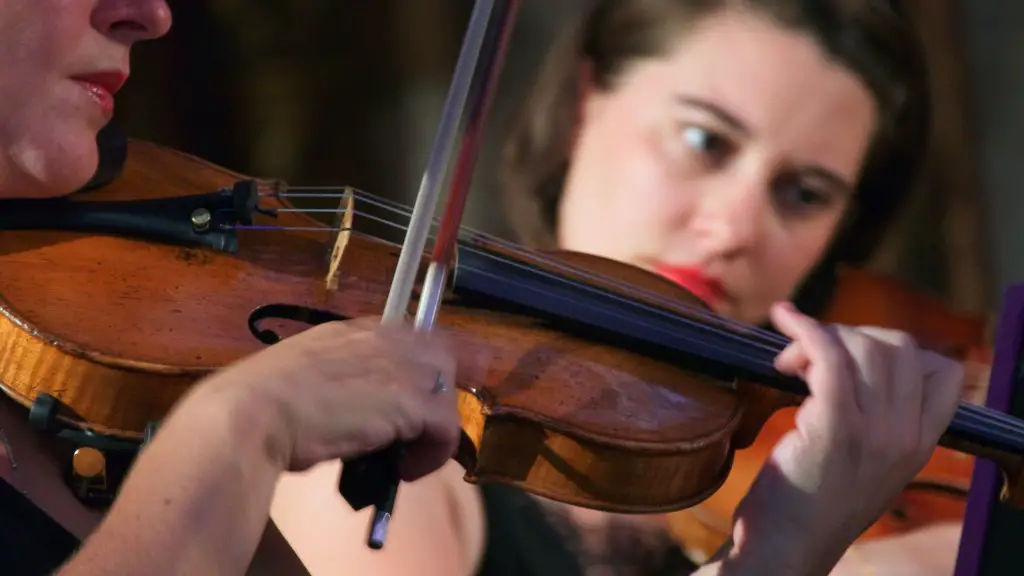The violin is one of the most iconic and recognizable instruments in the world, known for its sweet, melodic sound. It is a stringed instrument with four strings tuned to perfect fifths, and it’s considered one of the most important instruments in classical music.
The violin is believed to have been invented by Andrea Amati in 1555. Since then, it has gone through many modifications and improvements. The modern violin has been around since the late 1700s and was developed by Antonio Stradivari.
The violin can be played either solo or accompanied by other instruments and can be used to play a wide range of styles from classical to rock music. It’s also commonly used in jazz, folk, and pop music. Playing the violin requires skillful technique and excellent intonation, which is why it’s often said that “it takes a lifetime to master”.
The sound of the violin is created when a bow is drawn across its strings causing them to vibrate. This vibration creates a unique sound that has captivated audiences for centuries. Learning to play the violin takes patience and dedication but can be incredibly rewarding. It’s an instrument that will bring joy to any musician.
Parts of the Violin
The violin is a stringed instrument played with a bow. It has four main parts: the body, the strings, the bridge, and the bow. The body of the violin is made of wood and typically has an hourglass shape. It is composed of two sections: the top plate and the back plate. The strings are made of steel or synthetic material and are held in place by a tailpiece at one end and a pegbox at the other. The bridge rests on top of the body and transmits vibrations from the strings to create sound. Lastly, the bow is made of wood with horsehair stretched between its ends. All these parts work together to create beautiful music when played properly!
Benefits of Learning the Violin
Learning the violin can be a great way to improve your musical skills and knowledge. It can open up a whole new world of possibilities, both musically and personally. Playing the violin can help you develop better coordination and fine motor skills, build confidence, and even relieve stress. It can also help you become more creative by exploring different sounds and techniques. The practice required to master the violin is a great way to discipline yourself and stay focused on achieving your goals. In addition, playing the violin is a great way to make friends who share your interests and passions.
Playing the violin also has psychological benefits, such as improving concentration, relieving anxiety and depression, strengthening memory and cognitive abilities, enhancing self-esteem, improving communication skills, and increasing emotional intelligence. Learning to play an instrument is also known to have positive effects on academic performance. All these benefits make learning the violin an enjoyable experience for all ages!
Different Types of Violins
Violins come in a variety of shapes and sizes, all designed to produce a unique sound. The four main types of violins include full size, 3/4 size, 1/2 size, and 1/4 size. Full size violins are the largest and best suited for adults or those with longer arms. They are typically used in orchestral music or professional chamber music.
The 3/4 size violin is popular among intermediate students or those with shorter arms. It’s slightly smaller than a full-size violin and produces a slightly higher pitch. The 1/2 size violin is perfect for beginners or children since it is smaller and easier to play than the larger ones. Finally, the 1/4 size violin is the smallest of the four sizes and designed for very young children or those with short arms.
Each type of violin has its own unique sound and tonal quality, so players should choose one that fits their playing style.No matter which type you choose, all violins can produce beautiful sounds if played correctly.
Tuning a Violin
Tuning a violin is an important skill to master, as any experienced musician will tell you. It requires patience and practice, but with the right guidance, anyone can learn to tune a violin. The first step is to understand the basics of tuning a violin.
The strings of a violin are tuned by adjusting their tension with the tuning pegs at the top of the instrument. To tune each string, you must turn the peg until it reaches the correct note according to your musical reference. It’s important to use a reliable source for your reference pitch – an electronic tuner, for example – as this ensures accuracy and consistency when tuning your instrument.
Once you have each string in tune, you must then check that they are all in tune with each other. This means playing two strings together and ensuring that they sound in harmony. If one is slightly higher or lower than the other, use your tuner or reference pitch to adjust it until they match up perfectly. You may need to repeat this process several times until all of your strings are perfectly in tune with one another.
Finally, it’s important to remember that tuning a violin takes time and practice. Don’t be discouraged if you don’t get it right away – keep trying and eventually you’ll get there! Once you’ve mastered how to tune your instrument correctly, you’ll be able to enjoy playing it properly and make beautiful music!
Different Playing Techniques for De Violin
Playing the violin is a demanding and rewarding skill, with many different playing techniques available to the musician. To become a proficient violinist, one must become familiar with a variety of methods, each with its own unique character.
The most basic of these techniques include bowing, pizzicato (plucking), vibrato and tremolo. Bowing is the act of dragging the bow across the strings to produce sound, and can be used for both single-note melodies and chords. Pizzicato involves plucking the strings with one or more fingers to create a percussive sound. Vibrato is created by oscillating finger pressure on the string while bowing, resulting in an effect similar to singing. Tremolo is simply repeated bowing of a single note at an increasingly fast pace for dramatic effect.
More advanced techniques like spiccato (bouncing bow) and col legno (striking strings with back of bow) can add even more texture and color to your playing. Spiccato involves bouncing the bow off the string quickly in short bursts to create delicate notes, while col legno involves striking the string with the back of the bow for a more forceful sound.
Staccato, another popular technique, involves playing notes very quickly in succession and then allowing them to die away naturally. This technique can be used to create lines that are more articulate than those produced by regular bowing alone.
Finally, there are many different types of ornamentation that can be added to your playing such as trills, mordents and grace notes which all serve to add further nuance and expression to your music. By mastering these techniques you will be well on your way to becoming an accomplished violinist!
Care and Maintenance of Violins
Violins require regular maintenance to guarantee best sound quality. To ensure the longevity of a violin, it should be cared for properly with regular cleaning, polishing and tuning. Proper care also ensures that the instrument is properly adjusted and responds correctly to the player.
Cleaning is an important part of caring for a violin. Cleaning should be done with a soft cloth or brush to remove dust, dirt and fingerprints from the body of the instrument. The strings should also be wiped down using a soft cloth to remove dirt and excess rosin build up.
Polishing a violin involves using special oils or polishes recommended by luthiers to keep the wood in good condition and prevent it from drying out over time. These polishes also help protect against scratches and other damage that can occur during normal use.
Tuning is an important part of maintaining a violin’s sound quality. Tuning should be done regularly by a trained professional luthier who can adjust the tensions on each string as necessary for optimal sound quality.
In addition to regular maintenance, it is important to store your violin in a safe place away from direct sunlight or excessive heat or humidity which can damage both the wood and strings of the instrument. It is best to store violins in a case when not in use. Following these steps will ensure that your violin will last you many years of enjoyment and beautiful music making!
Wrap Up
The violin is an instrument with a long and varied history, from the monophonic melodies of 16th century Europe to the virtuoso performances of today. The ability of the violin to produce a wide range of sounds, from gentle tones to powerful crescendos, has made it one of the most popular instruments in Western music. Its versatility and malleability have also allowed it to be used in many different musical genres, from classical to jazz and even rock. The violin is a unique instrument that has stood the test of time. Its remarkable sound and expressive capabilities are unmatched by any other musical instrument.
